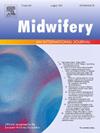助产士CTG技能测试的开发和试点测试
IF 2.5
3区 医学
Q1 NURSING
引用次数: 0
摘要
高质量的产科护理促进孕产妇安全和胎儿健康。现代心脏造影(CTG)解释强调胎儿生理学,而不是孤立的心率模式,旨在减少不必要的干预和改善结果。对CTG的误解仍然是围产期护理不合格的一个关键因素。评估口译技能对于评估能力和衡量培训效果至关重要。定期评估有助于提高临床熟练程度,确定教育需求,并最终提高分娩质量和安全性。目的本研究旨在开发和试点CTG技能测试,以评估助产士的口译技能。方法在现有文献的基础上编制技能测验,采用专家小组(n = 8)两轮在线问卷对内容效度进行评估。试点测试在一个分娩单位进行,助产士(n = 12),以评估测试的可行性。数据分析采用归纳性内容分析和定量方法,包括内容效度指标和描述性统计。结果CTG技能测试通过专家评审和试点研究得到了验证。内容效度极好(S-CVI/Ave = 0.94)。专家和助产士认为这是相关的,但具有挑战性,特别是在胎儿生理学方面。对测试所做的修订提高了测试的清晰度和可用性。技能测试适合评估CTG的能力和确定培训需求。结论sctg解读对安全分娩至关重要,助产士的能力和培训对产科护理质量至关重要。这项经过验证的技能测试有助于评估CTG技能,确定培训需求,并提高交付安全性。本文章由计算机程序翻译,如有差异,请以英文原文为准。
Development and pilot test of a CTG skills test for midwives
Background
High-quality obstetric care promotes maternal safety and fetal well-being. Modern cardiotocography (CTG) interpretation emphasises fetal physiology rather than isolated heart rate patterns, aiming to reduce unnecessary interventions and improve outcomes. Misinterpretation of CTG remains a key contributor to substandard perinatal care. Assessing interpretation skills is essential for evaluating competence and measuring the effects of training. Regular assessment supports clinical proficiency, identifies educational needs, and ultimately enhances the quality and safety of childbirth.
Aim
This study aimed to develop and pilot a CTG skills test to assess midwives' interpretation skills.
Methods
The skills test was constructed based on the existing literature and the content validity was evaluated by an expert panel (n = 8) through two rounds of online surveys. The pilot test was conducted at one birthing unit with midwives (n = 12) to assess the feasibility of the test. Data were analysed with inductive content analysis and quantitative methods, including the content validity index and descriptive statistics.
Results
The CTG skills test was validated through expert review and a pilot study. It showed excellent content validity (S-CVI/Ave = 0.94). Experts and midwives found it relevant but challenging, especially in fetal physiology. Revisions made to the test improved the clarity and usability of the test. The skills test is suitable for assessing CTG competence and identifying training needs.
Conclusions
CTG interpretation is crucial for safe childbirth, making midwives' competence and training essential for quality obstetric care. This validated skills test helps to assess CTG skills, identify training needs, and enhance delivery safety.
求助全文
通过发布文献求助,成功后即可免费获取论文全文。
去求助
来源期刊

Midwifery
医学-护理
CiteScore
4.50
自引率
7.40%
发文量
221
审稿时长
13.4 weeks
期刊介绍:
Midwifery publishes the latest peer reviewed international research to inform the safety, quality, outcomes and experiences of pregnancy, birth and maternity care for childbearing women, their babies and families. The journal’s publications support midwives and maternity care providers to explore and develop their knowledge, skills and attitudes informed by best available evidence.
Midwifery provides an international, interdisciplinary forum for the publication, dissemination and discussion of advances in evidence, controversies and current research, and promotes continuing education through publication of systematic and other scholarly reviews and updates. Midwifery articles cover the cultural, clinical, psycho-social, sociological, epidemiological, education, managerial, workforce, organizational and technological areas of practice in preconception, maternal and infant care.
The journal welcomes the highest quality scholarly research that employs rigorous methodology. Midwifery is a leading international journal in midwifery and maternal health with a current impact factor of 1.861 (© Thomson Reuters Journal Citation Reports 2016) and employs a double-blind peer review process.
 求助内容:
求助内容: 应助结果提醒方式:
应助结果提醒方式:


